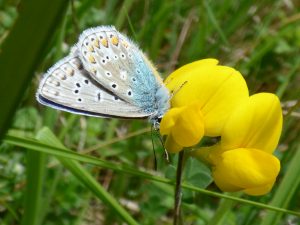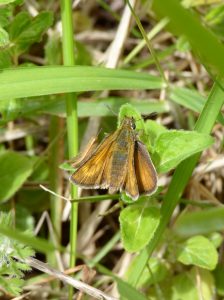Somewhere over the rainbow
Flicking through this week’s photos, I was astounded by the colours. The whole rainbow makes an appearance, in fact the whole colour spectrum really since black, brown, grey and white are also there. What do you think?
A walk around Lorton with colleagues provided the opportunity to spy out some interesting wildflowers. I do find some wildflower identification tricky – there are so many of them for one thing! However, I am attempting to learn a few more every now and then to help build up my knowledge base. One of my colleagues kindly lent me a camera so that I could take some photos (mine is at the repair shop, having been broken during the Scotland trip!).
Of course, I couldn’t help but also take photos of invertebrates …
At last, the moth catches are becoming more substantial. I caught a couple of especially lovely ones this week, as shown below. The Angle Shades (Phlogophora meticulosa) is a particular beauty, don’t you think? And that Small Magpie (Anania hortulata) – despite being relatively large, it is actually one of the micro-moths!
A long weekend stretched ahead of me as I battled through the motorways to get up to Cambridge. A lovely long weekend full of moths, and seeing family. I really wish my camera had been fixed already! Since I saw TWO Hummingbird Hawk-Moths!!! Two!! My second and third ones ever. I also visited the RSPB’s Headquarters, and had a wander around the reserve. There was one spot I found very interesting, just a pathway I had a thought. But on closer examination, I could see that it was buzzing with life. Namely different types of wasps. As you can see I took some blurry photos – oh for my camera!
In the Cambridge garden, life was wonderful. Butterflies fluttered, gardening was toiled over, and next door’s cats rolled in the grass contentedly. And then night came … and the moth trap was lit. What a haul! Three Privet Hawk-Moths (Sphinx ligustri <- what an amazing scientific name too), and six Elephant Hawk-Moths (Deilephila elpenor <- also a cracking name!)! I have never seen so many of each! I fell even more in love with the Privet H-M species, they really are fantastic. When they walk across your skin, you can actually feel a light but sharp pricking sensation from the hooks on their feet. I had one go for a wander at one point – it even went up onto my cheek!
- A male Gatekeeper – note the brown lines in the middle of the forewings
The week finished off with a gruelling trek back to Dorset. Sadly there seemed to be accidents in many places. Here’s hoping none were fatal. Not far from the house in Weymouth, I had to suddenly pull over. Something had flown in front of my car’s headlights. Definitely not a bat or a bird, my instinct was telling me a moth. And one of the Hawk-Moths at that. By the size of it, perhaps another Privet? I dashed over (looking both ways beforehand of course) to where it had flown too. As luck would have it, the moth had landed on a fence near a lamp-post. And indeed it was a Privet Hawk-Moth! How weird and wonderful that my gut instinct was correct!
The postings on this site are my own and don’t necessarily represent Dorset Wildlife Trust’s positions, strategies or opinions (or any other organisation or individuals for that matter).








































































































































































